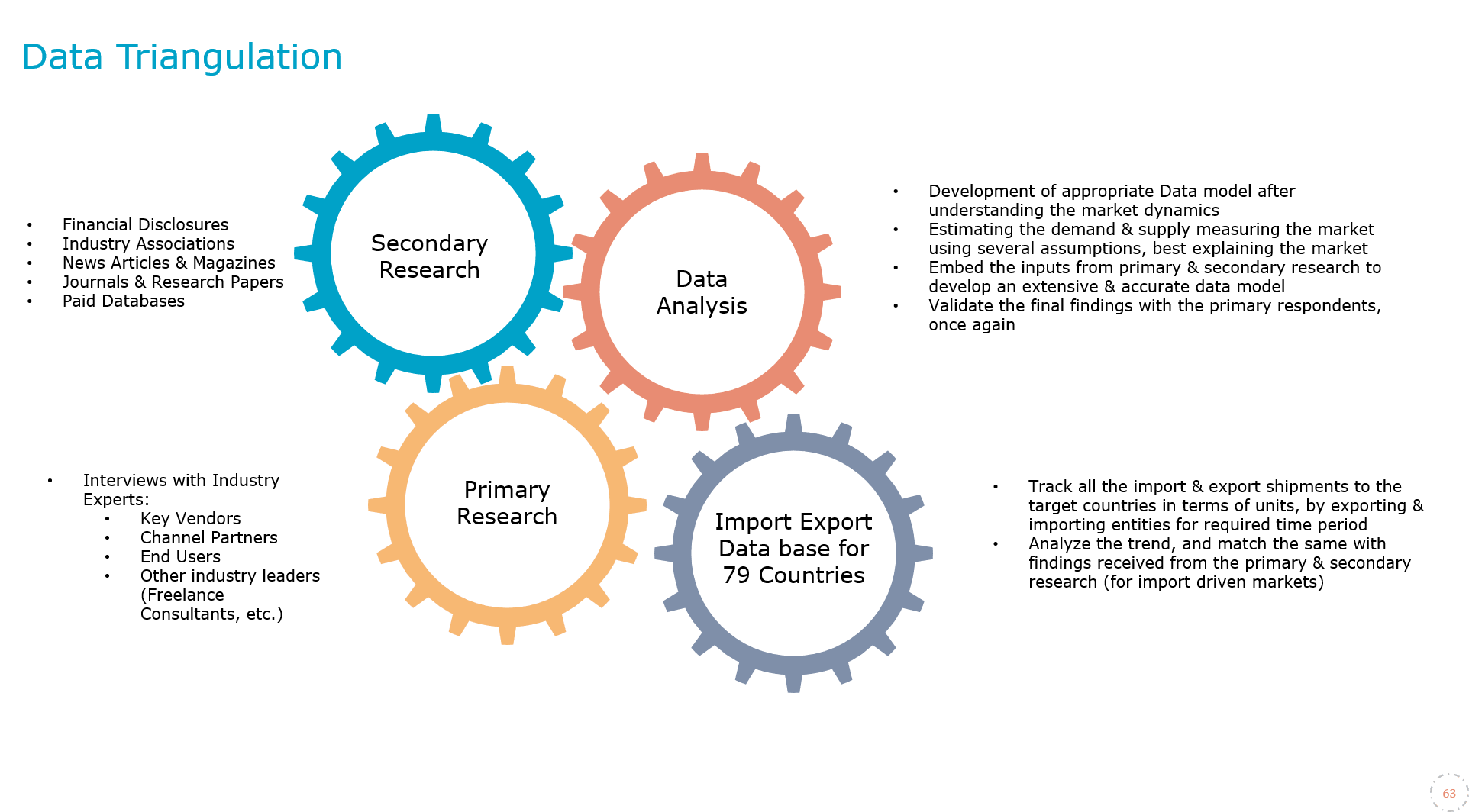
GCC Connected Medical Devices and Wearables Market Research Report: Forecast (2025-2030)
GCC Connected Medical Devices and Wearables Market - By Device Type (Diagnostic Devices [Insulin Pumps, Pulse Oximeter, ECG Monitor, Smart Watches, Cardioverter Defibrillator, Wear...able Electrocardiographs, Sleep Monitors, Others], Therapeutic Devices [Pain Management, Respiratory Therapy Management, Rehabilitation Devices]), By Product Site (Handheld, Headband, Strap/Clip, Shoe sensors, Others), By Application Type (Fitness monitoring, Remote patient monitoring, Diabetes/Obesity care, Cardiac Health, Others), By Distribution Channel (Online Stores, Retail Pharmacies) and others Read more
- Healthcare
- Jan 2024
- Pages 123
- Report Format: PDF, Excel, PPT
Market Definition
Connected Medical Devices refer to the devices that can transmit & receive data from one device to another or through the internet. For instance, a heart rate monitor transmits a patient’s heart rate data to a physician or healthcare institutes via connectivity technologies such as Bluetooth, Wi-Fi, etc. Medical wearables refer to a network of smart devices (electronic skin patches, ECG monitors, etc.) used by patients that are equipped with sensors, actuators, and software connected to the cloud that enables the collection, analysis, and transmission of health data in real-time. The growth in the integration of technology in healthcare institutes, growing awareness about physical fitness, and rising penetration of home care services are expected to boost the adoption of connected medical devices & wearables in the GCC region.
Market Insights & Analysis: GCC Connected Medical Devices and Wearables Market (2025-30)
The GCC Connected Medical Devices and Wearables and Wearables Market is projected to grow at a CAGR of around 20.19% during the forecast period, i.e., 2025-30. GCC region has always been at the forefront in accepting new technologies, especially in healthcare & consumer devices. The greater traction towards these devices is led by rising purchasing power, augmentation in the home care services, ascending health consciousness among the individuals, lifestyle trends, etc. Therefore, the double-digit growth in the sales of connected medical devices, and wearables were registered during 2020-23.
| Report Coverage | Details |
|---|---|
| Historical Years | 2020-23 |
|
Base Years
|
2024
|
|
Forecast Years
|
2025-30
|
| CAGR (2025-30) | 20.19% |
| Leading Country | UAE |
| Top Key Players | Fitbit, Inc., Abbott Laboratories, Medtronic, Omron Healthcare, Inc., Dexcom, Withings SAS, Vital connect, Polar Electro, Apple, Inc., Garmin and Others |
| Key Report Highlights |
|
*Boost strategic growth with in-depth market analysis - Get a free sample preview today!
The evolution of homecare has emerged as a new frontier in the connected medical device and wearable industry. The growing trend for remote patient monitoring catalyzed the penetration of connected medical devices. In 2021, around 50% of the hospitals in the UAE were synchronized with advanced IoT-based solutions. In addition, around 90% of the doctors in the country were found to be using technology solutions to monitor their patient's health. Moreover, the demand for fitness wearables registered an increase on account of the rise in in-house fitness activities, as the fitness centers' operations were suspended due to lockdown. Therefore, with the acceptance of telehealth, connected medical devices, and the wearables market is anticipated to register consistent growth during 2025-30.

GCC Connected Medical Devices and Wearables Market Driver:
Governments’ Digital Health Initiatives to Boost the Sales of Healthcare Wearables - The Governments across the region have proactively launched digital programs to ensure proper remote care of patients. The Department of Health, Abu Dhabi initiated a home care model to provide quality services to the patients by approving the services of around 75+ service providers catering to more than 5,000 patients. Further, the Ministry of Health and Prevention (MoHAP), the UAE, launched an updated version of its smart patient platform to ensure proper care of patients via digital channels. For instance, in 2020, the Government of Saudi Arabia launched (MAKOM) initiative to deliver tele-mental health services.
GCC Connected Medical Devices and Wearables Market Challenge:
Rising Cyber Security Attacks in Healthcare Sector - Due to rising digital innovations, organizations are becoming more susceptible to online attacks in GCC countries. These connected care medical devices, such as heart rate monitors and insulin pumps, provide more entry points for hackers as data security is not prioritized in their design. However, the devices might not store patients’ data, but attackers could leverage devices to plan a cyber-attack on the server that holds the crucial information. Therefore, rising concerns over cyber security in connected care devices are considered one of the major challenges in the healthcare industry.
GCC Connected Medical Devices and Wearables Market Trend:
Wearable Blood Pressure Monitors Gaining Traction in the GCC countries Amid Rising Cardiac Health Concerns - Remote blood pressure monitoring is gradually transforming into a much sought-after feature in the GCC region to measure blood pressure & daily activity, including steps taken & calories burned. With the rising penetration of wearables & consistent growth in cardiac patients, the demand for wearable blood pressure monitoring devices is in its introductory phase in the GCC region. In 2021, according to WHO, around 29% of the UAE population suffered from hypertension, around 40% in Saudi Arabia & more than 25% in Qatar. Consequently, these alarming statistics in the leading countries of the region would gradually pave the way for wearable blood pressure monitoring devices. In 2021, these devices were primarily purchased from Europe & North America. However, the adoption of these devices would soar in the forthcoming years.
GCC Connected Medical Devices and Wearables Market (2025-30): Segmentation Analysis
The GCC Connected Medical Devices and Wearables Market study of MarkNtel Advisors evaluates & highlights the major trends and influencing factors in each segment. It includes predictions for the period 2025–2030 at the level. According to the analysis, the market has been further classified as:
By Device Type
- Diagnostic Devices
- Therapeutic Devices
Among the two, the diagnostic devices completely dominated the GCC Connected Medical Devices and Wearables market in 2024, with a market share exceeding 60%. Within, diagnostic devices pulse oximeters, smartwatches, sleep monitors, and insulin pumps collectively grabbed the market share of more than 50% in the same year. Additionally, with the continuous rise in the diabetic population, health consciousness, and hybrid operating model of healthcare institutes in the GCC region, the demand for the above-mentioned connected devices & wearables would continue to surge in the forthcoming years.
According to the Public Health Research Department of New York University, Abu Dhabi, around 20% of the UAE population is diabetic & around 65% of the individuals were obese in 2021, while 19% of the Saudi residents are diabetic (as reported by Diabetes Atlas), and 68% were obese in the same year. Moreover, more than 45% of the individuals in both countries are suffering from undiagnosed diabetes. Hence, these staggering figures are anticipated to grow in the coming years. Consequently, the demand for connected medical devices & wearables would soar in the next few years.
By Product Site
- Handheld
- Headband
- Strap/Clip
- Shoe sensors
Among them, Handheld devices grabbed a significant market share during 2020-23. However, the market shares of straps, bracelets, or bands have also registered an uptrend during the same period. With the growing adoption of health monitoring & wearables across the countries such as Saudi Arabia, UAE, etc., the demand for strap/clip & bracelets is projected to boost in the years to come. Hence, healthcare providers are establishing a partnership with wearable providers to offer enhanced medical care to patients. In 2022, Mubadala Health announced its partnership with BioIntelliSense to utilize BioIntelliSense’s BioSticker and BioButton wearables. The partnership would enable remote tracking of the vital signs of the patients. The market shares of strap/clip, bracelets are expected to exceed 20% through 2030.
By Application Type
- Fitness monitoring
- Remote patient monitoring
- Diabetes/Obesity care
- Cardiac Health
- Others (Home healthcare, sleep tracking, etc.)
Of them all, the GCC Connected Medical Device & Wearables market was dominated by fitness monitoring and remote patient monitoring devices in 2024. Not only the private entities, but the government bodies are equally involved in propagating these solutions to ensure the good health of their citizens. For instance, the Government of Abu Dhabi launched a health screening program viz. ‘Weqaya’ in 2020, which allows its citizens to monitor their fitness status & conduct follow-up consultations, if found to be at risk of any disease. In the same year, Dubai introduced an AI-enabled fitness screening service for expatriates.
In addition, Qatar introduced a connected wellness initiative that includes a ‘Digital Health Coach’ service, which deploys smartphones & fitness wearables to observe food consumption & physical activity levels to generate real-time health insights. Therefore, the fitness monitoring devices would continue to witness an increased momentum in demand during the forecast years. Furthermore, diabetes/obesity care is also registering an increased application as the diabetic population in the entire region is growing at an exponential pace, owing to evolving lifestyles & changing eating patterns.
According to International Diabetes Federation (IDF), the total diabetic population of the GCC region can be as high as 22% of the entire demography. Also, the prevalence of type 2 diabetes is highest in the GCC countries in comparison to the global average. Therefore, the penetration of connected medical devices would continue to grow for diabetic/obesity monitoring & control with the growing awareness & government initiatives to encourage citizens to pursue a healthy lifestyle.
By Distribution Channel
- Online Stores
- Retail Pharmacies
- Others (Supermarkets/Hypermarkets)
Among them, the supermarkets & hypermarkets segment held a considerable market share in the GCC Connected Medical Device and Wearables market during 2017-19. However, the market had undergone a paradigm shift in 2020 with the outbreak of COVID-19. In 2020, the market shares of the online channel in the monthly sales of connected medical devices and wearables exceeded 60% from May 2020 to July 2020. The same trend is projected to prevail in the years to come due to the ease of buying products online.
GCC Connected Medical Devices and Wearables Market Regional Projection
Geographically, the GCC Connected Medical Devices and Wearables Market expands across:
- The UAE
- Saudi Arabia
- Oman
- Qatar
- Kuwait
- Bahrain
Of all the countries across GCC, the UAE is one of the most vibrant economies for connected medical devices & wearables, owing to greater proximity to wearable technology, high-speed internet penetration, growth in footprints of foreign multinationals, proactive government initiatives to ensure fitness, rising home care services, and so on. The healthcare institutes are rapidly integrating technology for cost optimization, remote patient monitoring, and ensuring proper care to citizens. In addition, the organizations in the construction industry are gradually moving toward using fitness wearables to ensure workers’ health safety using wrist straps.
Moreover, with the growth in homecare technologies, the demand for connected medical devices is exhibiting exponential growth. In 2018, Dubai Health Authority (DHA) introduced smart home care to allow the home care team to contact doctors via digital applications & connected medical devices for consultation. These smart technologies also include internet-enabled wireless devices linked to DHA’s electronic health record (EHR) system, viz., SALAMA, ensuring that patient records are updated in real-time during home visits.
GCC Connected Medical Devices and Wearables Industry Recent Developments
- In 2021, FitBit introduced FitBit Charge 5, which was the first brand in the UAE to include a color-AMOLED display in the smart fitness bands.
- In 2020, FitBit launched Fitbit Charge 4 in the Middle East countries such as the UAE, Bahrain, etc.
Gain a Competitive Edge with Our GCC Connected Medical Devices and Wearables Market Report
- GCC Connected Medical Devices and Wearables Market Report by Markntel Advisors provides a detailed & thorough analysis of market size, growth rate, competitive landscape, and key players. This comprehensive analysis helps business organizations to gain a holistic understanding of market dynamics & make informed decisions.
- This report also highlights current market trends & future projections, allowing business organizations to identify emerging opportunities & potential challenges. By understanding market forecasts, companies can align their strategies & stay ahead of the competition.
- GCC Connected Medical Devices and Wearables Market Report aids in assessing & mitigating risks associated with entering or operating in the market. By understanding market dynamics, regulatory frameworks, and potential challenges, business organizations can develop strategies to minimize risks & optimize their operations.
*Reports Delivery Format - Market research studies from MarkNtel Advisors are offered in PDF, Excel and PowerPoint formats. Within 24 hours of the payment being successfully received, the report will be sent to your email address.
Frequently Asked Questions
- Introduction
- Product Definition
- Research Process
- Assumptions
- Market Segmentation
- Executive Summary
- GCC Connected Medical Devices and Wearables Market Trends and Insights
- GCC Connected Medical Devices and Wearables Market Dynamics
- Drivers
- Challenges
- Porter’s Five Force Analysis
- Threat of New Entrants
- Threat of Substitute products
- Power of Suppliers
- Power of Buyers
- Competition in the industry
- GCC Connected Medical Devices and Wearables Market Regulation and Policy
- GCC Connected Medical Devices and Wearables Market Hotspots and Opportunities
- GCC Connected Medical Devices and Wearables Market Outlook, 2020-2030F
- Market Size and Analysis
- By Revenue (USD Million)
- Market Share and Analysis
- By Device Type
- Diagnostic Devices
- Insulin Pumps
- Pulse Oximeter
- ECG Monitor
- Smart Watches
- Cardioverter Defibrillator
- Wearable Electrocardiographs
- Sleep Monitors
- Others (Electronic skin patches, fitness tracker etc.)
- Therapeutic Devices
- Pain Management
- Respiratory Therapy Management
- Rehabilitation Devices
- Diagnostic Devices
- By Product Site
- Handheld
- Headband
- Strap/Clip
- Shoe sensors
- Others (Clip, bracelet etc.)
- By Application Type
- Fitness monitoring
- Remote patient monitoring
- Diabetes/Obesity care
- Cardiac Health
- Others (Home healthcare, sleep tracking etc.)
- By Distribution Channel
- Online Stores
- Retail Pharmacies
- Others (Supermarkets/Hypermarkets)
- By Country
- UAE
- Saudi Arabia
- Qatar
- Oman
- Bahrain
- Kuwait
- By Company
- Revenue Shares
- Competition Characteristics
- By Device Type
- Market Size and Analysis
- UAE Connected Medical Devices and Wearables Market Outlook, 2020-2030F
- Market Size and Analysis
- By Revenue
- Market Share and Analysis
- By Device Type
- By Product Site
- By Application Type
- By Distribution Channel
- Market Size and Analysis
- Saudi Arabia Connected Medical Devices and Wearables Market Outlook, 2020-2030F
- Market Size and Analysis
- By Revenue
- Market Share and Analysis
- By Device Type
- By Product Site
- By Application Type
- By Distribution Channel
- Market Size and Analysis
- Qatar Connected Medical Devices and Wearables Market Outlook, 2020-2030F
- Market Size and Analysis
- By Revenue
- Market Share and Analysis
- By Device Type
- By Product Site
- By Application Type
- By Distribution Channel
- Market Size and Analysis
- Oman Connected Medical Devices and Wearables Market Outlook, 2020-2030F
- Market Size and Analysis
- By Revenue
- Market Share and Analysis
- By Device Type
- By Product Site
- By Application Type
- By Distribution Channel
- Market Size and Analysis
- Bahrain Connected Medical Devices and Wearables Market Outlook, 2020-2030F
- Market Size and Analysis
- By Revenue
- Market Share and Analysis
- By Device Type
- By Product Site
- By Application Type
- By Distribution Channel
- Market Size and Analysis
- Kuwait Connected Medical Devices and Wearables Market Outlook, 2020-2030F
- Market Size and Analysis
- By Revenue
- Market Share and Analysis
- By Device Type
- By Product Site
- By Application Type
- By Distribution Channel
- Market Size and Analysis
- GCC Connected Medical Devices and Wearables Market Key Strategic Imperatives for Success & Growth
- Competition Outlook
- Competition Matrix
- Brand Specialization
- Target Markets
- Target End Users
- Research & Development
- Strategic Alliances
- Strategic Initiatives
- Company Profiles
- Fitbit, Inc.
- Abbott Laboratories
- Medtronic
- Omron Healthcare, Inc.
- Dexcom
- Withings SAS
- Vital connect
- Polar Electro
- Apple, Inc.
- Garmin
- Competition Matrix
- Disclaimer
MarkNtel Advisors follows a robust and iterative research methodology designed to ensure maximum accuracy and minimize deviation in market estimates and forecasts. Our approach combines both bottom-up and top-down techniques to effectively segment and quantify various aspects of the market. A consistent feature across all our research reports is data triangulation, which examines the market from three distinct perspectives to validate findings. Key components of our research process include:
1. Scope & Research Design At the outset, MarkNtel Advisors define the research objectives and formulate pertinent questions. This phase involves determining the type of research—qualitative or quantitative—and designing a methodology that outlines data collection methods, target demographics, and analytical tools. They also establish timelines and budgets to ensure the research aligns with client goals.
2. Sample Selection and Data Collection In this stage, the firm identifies the target audience and determines the appropriate sample size to ensure representativeness. They employ various sampling methods, such as random or stratified sampling, based on the research objectives. Data collection is carried out using tools like surveys, interviews, and observations, ensuring the gathered data is reliable and relevant.
3. Data Analysis and Validation Once data is collected, MarkNtel Advisors undertake a rigorous analysis process. This includes cleaning the data to remove inconsistencies, employing statistical software for quantitative analysis, and thematic analysis for qualitative data. Validation steps are taken to ensure the accuracy and reliability of the findings, minimizing biases and errors.

4. Data Forecast and FinalizationThe final phase involves forecasting future market trends based on the analyzed data. MarkNtel Advisors utilize predictive modeling and time series analysis to anticipate market behaviors. The insights are then compiled into comprehensive reports, featuring visual aids like charts and graphs, and include strategic recommendations to inform client decision-making









